Late winter/early spring Arrow viewing, part one
Anticipating the impending austerity of retirement, I had a flurry of ordering towards the end of 2024 and disks are still trickling in as pre-orders reach their release dates. Among these are a number of new Blu-rays from Arrow (supplementing a substantial backlog accumulated over the past couple of years). These include both new editions of movies I’ve already seen (and some I already owned on DVD), some older movies I hadn’t previously seen, and one new movie about which I knew nothing but ordered on a whim during a sale.
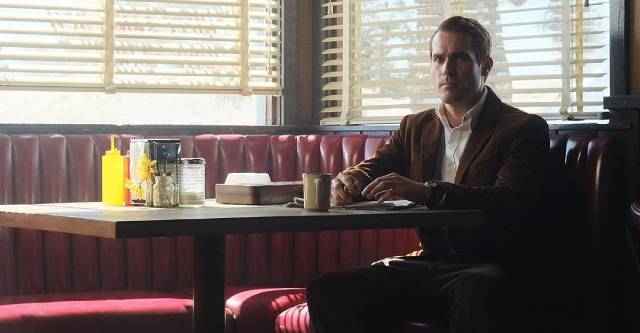
The Last Stop in Yuma County (Francis Galluppi, 2023)
The latter is Francis Galluppi’s The Last Stop in Yuma County (2023), which strives quite successfully to emulate ’70s exploitation of the kind someone like Roger Corman might have been producing for young up-and-coming directors. Scaled to its budget, the film uses a single location and a small cast to create a tense pressure-cooker atmosphere which builds inevitably to an explosion of violence. First-time feature writer-director Galluppi is ably assisted by cinematographer Mac Fisken, who makes the most out of a parched desert setting and the roadside diner where various stranded travellers find themselves forced into close company when the gasoline tanker fails to show up and restock the attached service station’s tanks. Equally important is the cast, which effortlessly evokes the ’70s ambience.
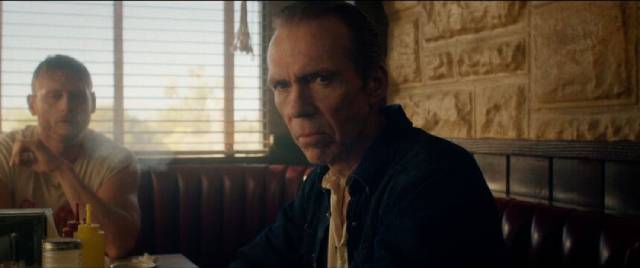
First to arrive is a guy identified only as The Knife Salesman (Jim Cummings), who carries a small sample case and chats with Charlotte (Jocelin Donahue), the sole person on the diner’s staff today. He explains that he’s on his way home to be at his young daughter’s birthday party, but although we never learn anything more about him, his sketched-in backstory seems increasingly less convincing as events unfold. Guarded and suspicious, he quickly deduces that two men who arrive in a scruffy Pinto are a pair of bank robbers he heard about on his car radio. Beau (Richard Brake) and Travis (Nicholas Logan) are tightly wound and not happy to be stuck waiting for the tanker – but everyone else who trickles in is also out of gas, so they can’t even steal another vehicle. Unknown to everyone, the tanker won’t be arriving because it’s lying on its side in a gully.
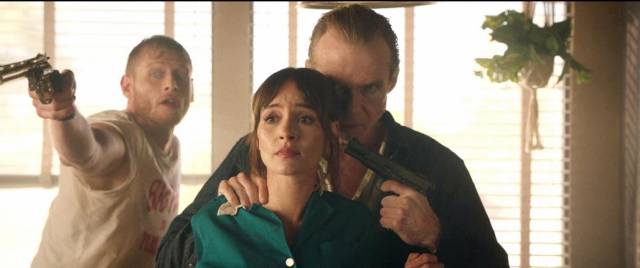
Tensions escalate as the Salesman manages to warn Charlotte about the threat and she tries surreptitiously to contact her husband, who happens to be a local cop. Galluppi creates a series of increasingly tense situations leading to a bloody explosion which leaves everyone but the Salesman dead … but it’s not over yet. Deciding to take the stolen bank loot for himself, he becomes a monster as bad as the brothers when a young family arrive looking for gas just as he attempts to get away, leading to another bloody explosion, which in turn leads to a climactic confrontation beside the wrecked tanker as Charlotte’s husband catches up with him. While the core situation is very effectively realized, the unresolved mystery about the Knife Salesman’s real identity hangs over the film in a way which suggests Galluppi is aiming for something deeper than cheap thrills, something about the ultimate unknowability of another person’s true nature – something perhaps like the unresolved existential questions of classic European movies of the ’60s. The ending of Yuma County is left open to viewer interpretation, but with little to go on you’ll just be guessing.
But apart from this one tricksy element, the film is a terrific little thriller, impeccably crafted and beautifully presented on Arrow’s disk along with no less than three commentaries (Galluppi with his producer, his cast and his DoP), an interesting interview with Galluppi who talks about his influences, a video essay and a brief making-of.
*
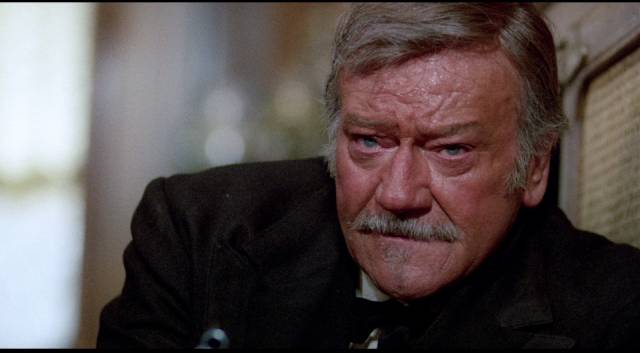
The Shootist (Don Siegel, 1976)
Of the movies I hadn’t previously seen, perhaps the most surprising is Don Siegel’s The Shootist (1976), which I didn’t see on its theatrical release or anytime later on television or home video. This despite being a Siegel fan and the movie getting generally positive reviews. While essentially a modest, somewhat old-fashioned western (based on a Glendon Swarthout novel), The Shootist attains mythic status from being not only John Wayne’s final film, but from the actor playing a legendary gunfighter dying of cancer as Wayne himself was dying of cancer. Conflation of actor and role lends the film an emotional depth beyond what’s inherent in the story.
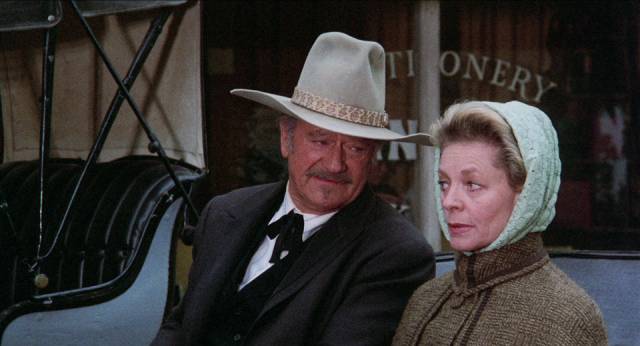
That story is quite familiar – an aging gunfighter with a larger-than-life reputation wants only to end his life in peace, but everyone he meets fears him or wants to challenge him to raise their own status. He arrives in a small town at the turn or the century, a dinosaur who no longer fits into a world which has moved on. A visit to an equally aging Dr. Hostetler (James Stewart, himself no slouch as a western star, who had previously co-starred with Wayne in John Ford’s equally elegiac The Man Who Shot Liberty Valance [1962]) delivers the news J.B. Books has been expecting – at best he has a few months left. Wanting to spend his remaining time quietly, he rents a room from widow Bond Rogers (Lauren Bacall), who only finds out later who he is and then tries to kick him out. Learning of his condition, she reluctantly lets him stay, though his presence causes her other boarders to leave while her young son Gillom (Ron Howard) is drawn to Books with a troubling hero worship.
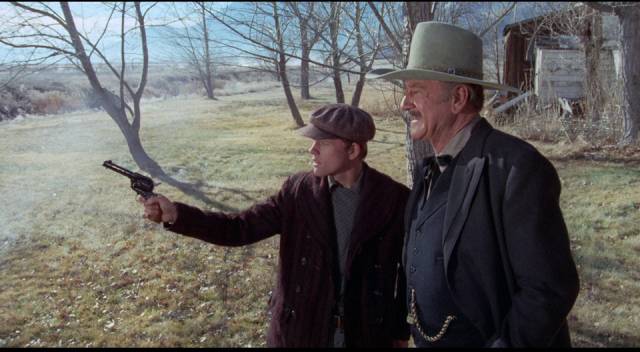
The relationship between Books and Gillom becomes the core of the film; the old gunfighter gives the boy shooting lessons, not realizing that his own way of life is no longer appropriate. And when Books decides to go out on his own terms by facing three challengers in the town saloon – Sweeney (Richard Boone), Cobb (Bill McKinney) and Pulford (Hugh O’Brian) – Gillom follows to watch the showdown. Having dispatched the three gunmen, Books is shot by the saloon keeper and Gillom grabs a gun and shoots the man, immediately appalled by what he’s done. The reality of violence turns out to lack any trace of the romanticism which infuses the western myth of men like Books. The dying gunman’s final legacy is this inadvertent lesson for the boy who’ll have to make his way in a new century.
Although there was apparently friction between Siegel and Wayne, the film displays the director’s usual style, clean and unfussy, serving the material without calling attention to his technique. Less revisionist than more prominent westerns of its day, The Shootist is suffused with melancholy but doesn’t mourn the end of a violent era the way a movie like The Wild Bunch does; it recognizes that the violence is antithetical to a healthy society and that the time for it to end is well past.
Arrow’s excellent 2K master is supplemented with a commentary, a couple of video essays, a pair of interview featurettes and an archival making-of.
*
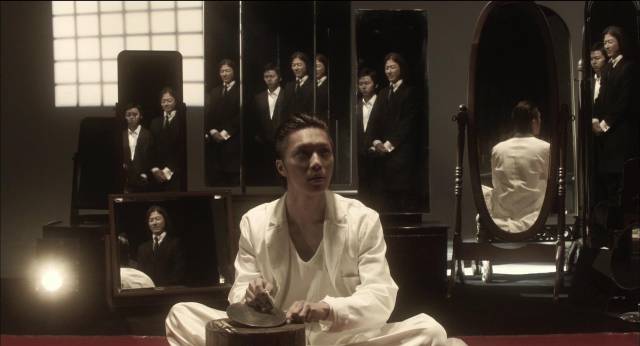
Rampo Noir (Various, 2005)
The Japanese writer Tarô Hirai, who wrote under the pseudonym Edogawa Rampo in homage to Edgar Allan Poe, has been a popular source for adaptations as far back as 1927. A writer of mysteries and horror, he became particularly influential in the 1960s with novels and stories inspiring movies in the “erotic grotesque” genre – in rapid succession, Kinji Fukasaku, Yasuzô Masumura and Teruo Ishii made features which drew on the twisted psychology and perverse sexuality which ran through Rampo’s work. Perversity rather than mystery is the core of Rampo Noir (2005), an anthology with four directors tackling individual, unrelated stories.
Directed by music video director Suguru Takeuchi, “Mars Canal” is a highly compressed opener which eschews narrative for impressionistic visuals. A man wanders an alien landscape, recalling a sexual relationship; eventually seeming to fuse with his lost lover, his gender morphs from male to female.
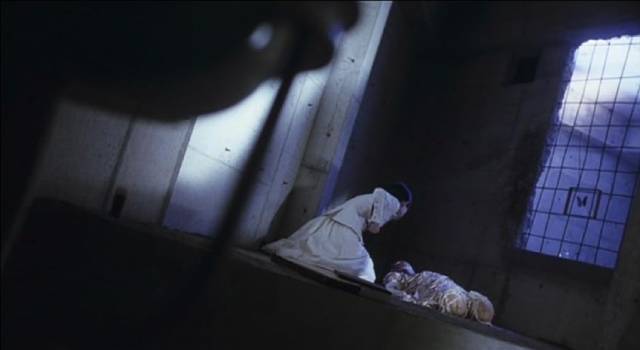
The other three longer pieces also subjugate story to mood. “Mirror Hell” by Akio Jissôji has Rampo’s detective character Akechi (Tadanobu Asano) looking into a series of unusual deaths in which hand-crafted mirrors appear to have burned off women’s faces, leading to an artisan whose obsession leads to madness as he seals himself inside a sphere with a completely mirrored interior to experience pure subjectivity isolated from the material world.
Hisayasu Satô’s “Caterpillar” ramps up the perversity with the story of a man who returns from war deaf and limbless, an immobile torso at the mercy of a beautiful wife who torments him sadistically.
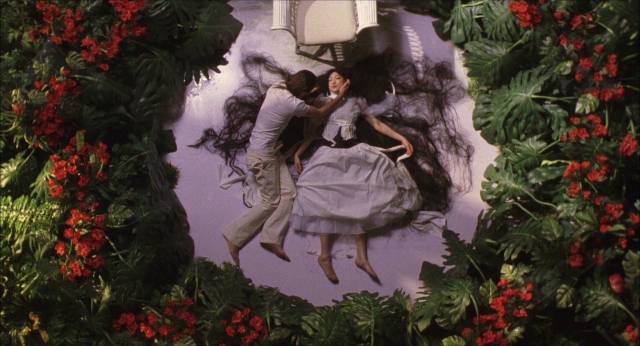
Finally, Kaneko Atsushi’s “Crawling Insects” contrasts the reality of a chauffeur obsessed with the famous actress he drives around and his febrile inner world, bursting with colour and a hallucinatory artificiality which conceals the horror of his actions as he kills her and creates a tableau of romantic worship which turns nightmarish as her body decays.
The frequently striking visuals recall earlier adaptations, particularly Ishii’s Horrors of Malformed Men (1969), though the relatively short running times heighten the hothouse perversity of the material; less satisfying as storytelling than as a kind of twisted art installation. Visually striking, at times uncomfortable to watch, Arrow’s presentation is exemplary, supplemented with a commentary, cast and crew interviews and a long-form making-of.
*
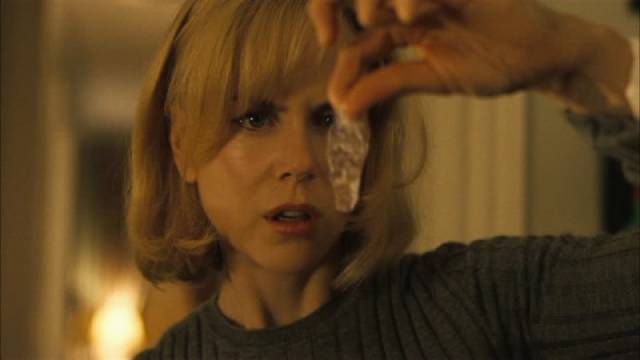
The Invasion (Oliver Hirschbiegel, 2007)
I didn’t see Oliver Hirschbiegel’s The Invasion (2007) on its original release, mainly because of the generally negative reviews and the seeming redundancy of yet another adaptation of Jack Finney’s influential 1954 novel The Body Snatchers. It had been fourteen years since Abel Ferrera’s Body Snatchers (1993), which was a merely-okay follow-up to Philip Kaufman’s excellent Invasion of the Body Snatchers (1978), which itself was an intelligent update of Don Siegel’s Invasion of the Body Snatchers (1956), a key evocation of mid-’50s paranoia. Finney’s story of alien plants stripping people of their individual humanity to create a soulless, homogenized society is so durable that it can be used as a hook for exploring each generation’s deepest social anxieties. But Hirschbiegel’s version, released three years after his international success with Downfall (2004), is a mess (for good reasons it turns out) – yet I did find it quite entertaining.
Here, rather than giant seedpods, the alien threat comes in the form of a fungus which infects people with it spores. It arrives with the crash of a space shuttle which spreads its wreckage across a wide swath of the country, transmitted by touch or contact with bodily fluids (there’s rather a lot of vomiting). All of this is seen through the eyes of Washington psychiatrist Carol Bennell (Nicole Kidman), whose estranged husband Tucker (Jeremy Northam), a CDC expert, is one of the first to be infected, putting their young son Oliver (Jackson Bond) at risk. With her friends Ben (Daniel Craig) and Dr. Galeano (Jeffrey Wright), Carol has to figure out what’s going on while staying one step ahead of the fungus.
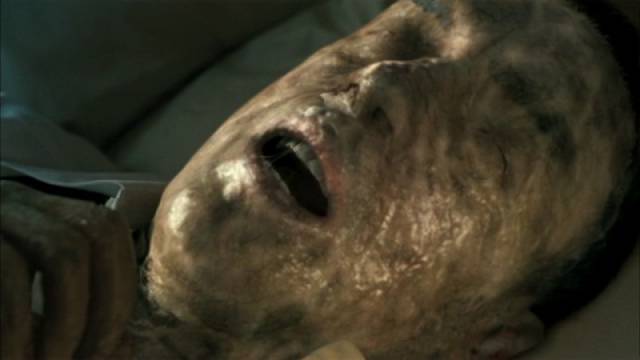
The movie goes through the expected motions (you have to stay awake to stave off infection; you have to move through crowds like an automaton to hide your still-human nature), but it’s rife with implausible B-movie plotting – Dr. Galeano very quickly isolates the infecting agent and discovers a way to counter its effects (Oliver turns out to be the key), managing to manufacture vast quantities of the cure to be spread across the globe before the aliens completely take over. Throw in car chases and zombie-like hordes pursuing Carol through the streets of Washington, and the film lacks the ominous paranoid power of the previous three versions.
Some of that is due to the movie’s troubled production. The studio, Warner Bros., weren’t happy with Hirschbiegel’s original cut, which apparently played more as a straightforward thriller, and hired the Wachowskis to rewrite and reshoot some of it to pump up the sci-fi element. But that didn’t do the trick either, so they hired James McTiegue to punch it up with some action (the incongruous car chases and crashes). It’s a patchwork which almost loses sight of the heart of Finney’s story.
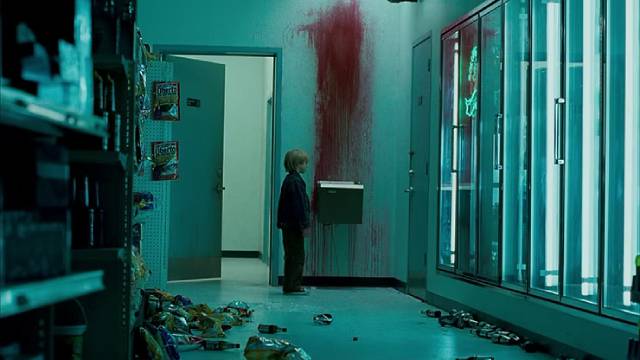
That story is so familiar, and its central theme so pervasive in pop culture that one tends to leave it largely unexamined. Although not actually original to Finney – The Body Snatchers was preceded by Robert A. Heinlein’s The Puppet Masters in 1951 and before that John W. Campbell’s short story “Who Goes There?” in 1938 – his telling remains the most potent; but what are the deeper implications? The pods promise a world of peace and harmony, without war or want; all this could be ours if only we let go of our emotions and the irrational impulses they give rise to. Although Siegel’s film can be read as an attack on McCarthyite conformity, it serves equally as a Red Scare parable about the dangers of communism, which supposedly strips its subjects of their individuality in service of an enforced equality. The dichotomy between unfettered emotions and a mutually shared rationality is one of the central threads of the Star Trek mythology, embodied most clearly in the friction between Kirk and Spock, the ultimate expression of the “inhuman” side of the equation being the hive-mind of the Borg.
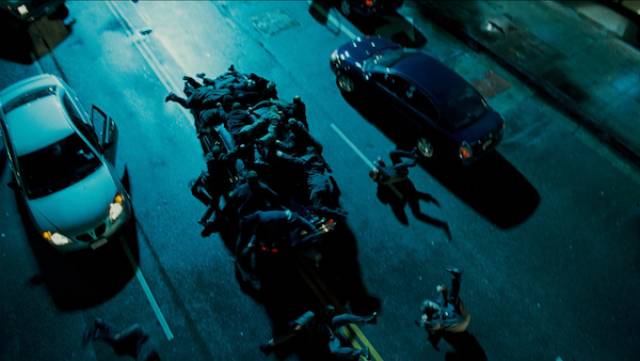
The infected in The Invasion, as do the pod people of the earlier movies, argue that their way is one of peace and harmony, with no wars, no hunger … and yet the story insists that the price is too high. That peace and cooperation negate what makes us truly human – those messy emotions – and that this makes it more desirable to live with all the social and political horrors which constitute human history. Mutual support and a society predicated on making life decent for all its members somehow becomes anathema – an attitude which remains rooted in the differences between socialism and capitalism; the latter insists that conflict in the form of competition for finite resources is essential for us to remain human. It becomes ever clearer just how egregious this idea is as we find ourselves watching late-stage capitalism collapsing in on itself while the majority struggle as a very small minority vacuums up all of society’s wealth. As much as I love Finney’s story and the movies made from it, it’s obviously time to stop maligning the pods and recognize that they possess some very positive attributes.
The Invasion looks very good on Arrow’s disk and comes with a commentary, a couple of video essays, and multiple archival featurettes. One of the essays emphasizes the connection between this reworking of the story and the impact of the Covid pandemic; one inadvertently prescient invention of the script is the government’s reaction to the “new flu” caused by the alien fungus and the widespread vaccination program surreptitiously used to spread the disease – it’s almost as if the wave of Right-wing anti-vax hysteria which complicated a rational response to Covid might have had its roots in Hirschbiegel’s movie.
Comments